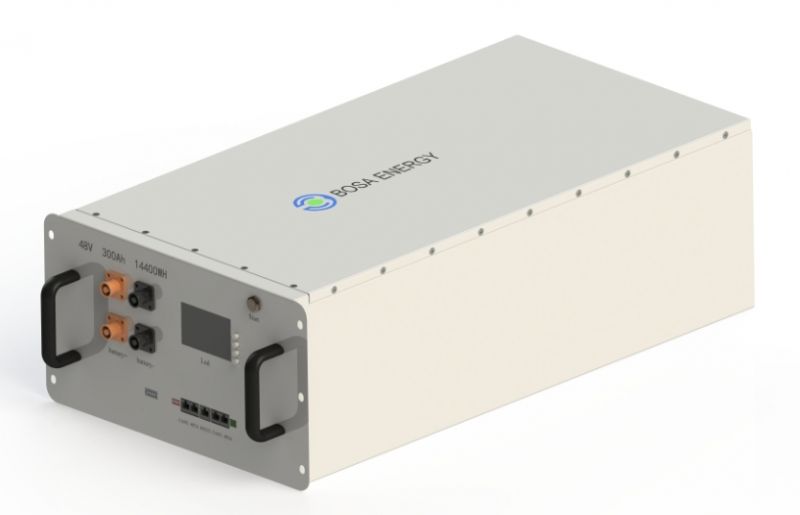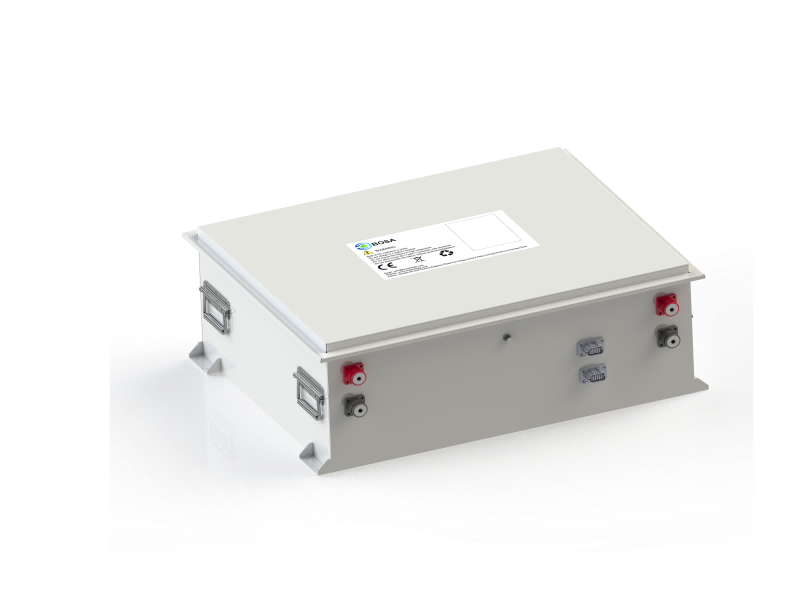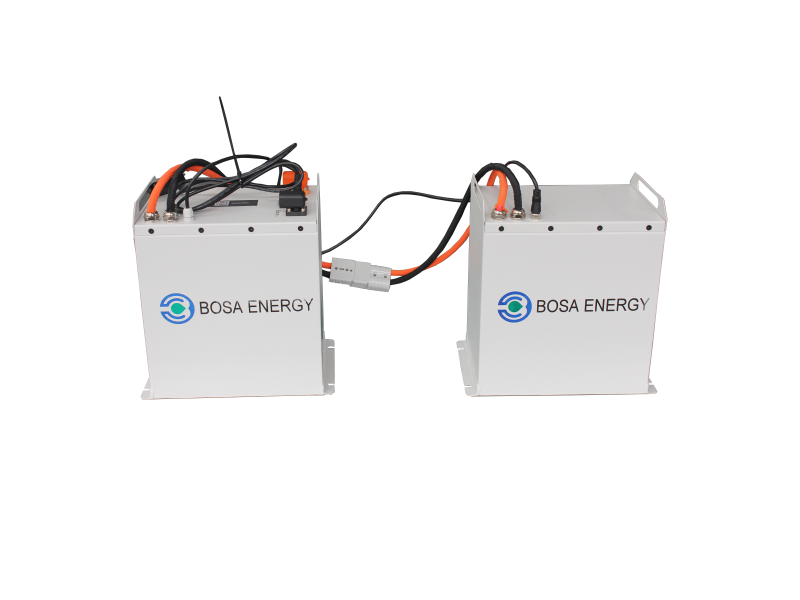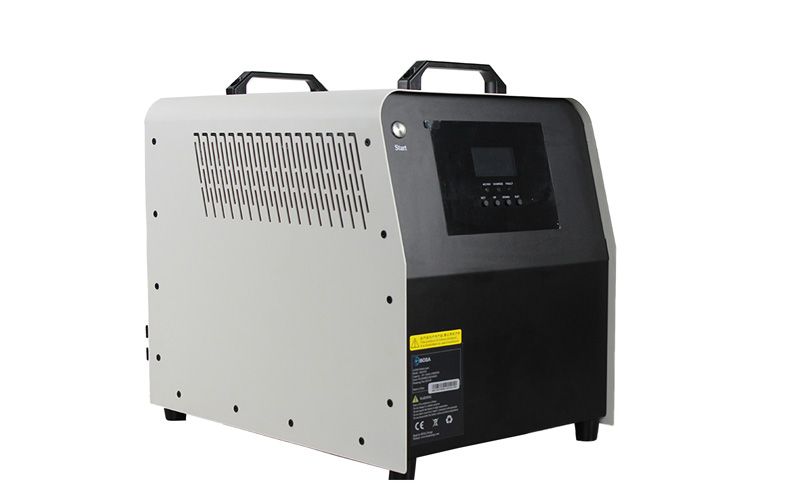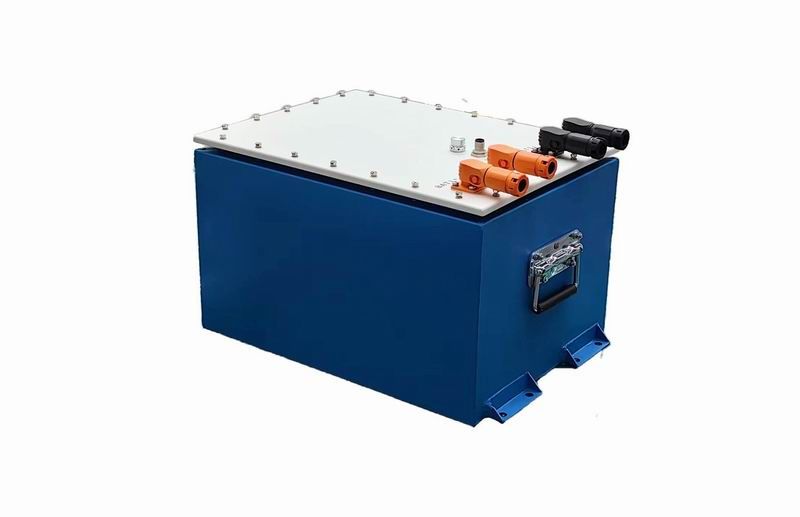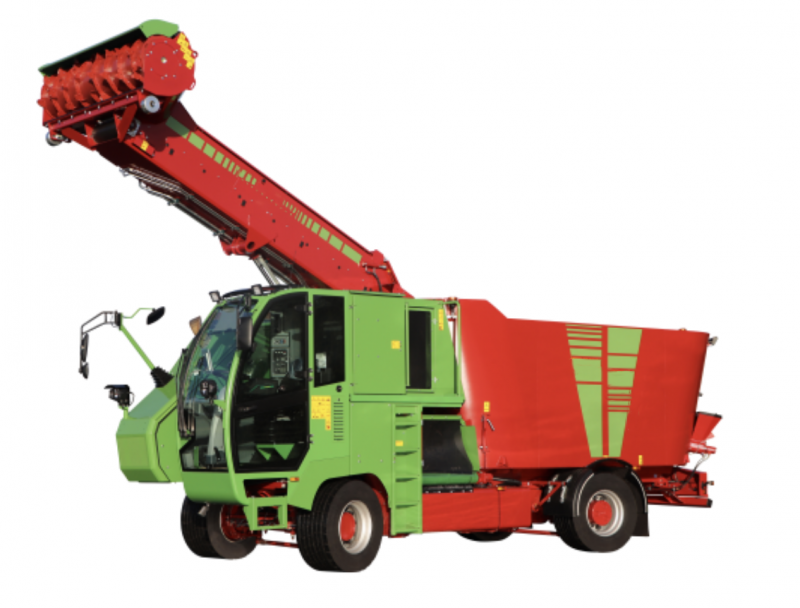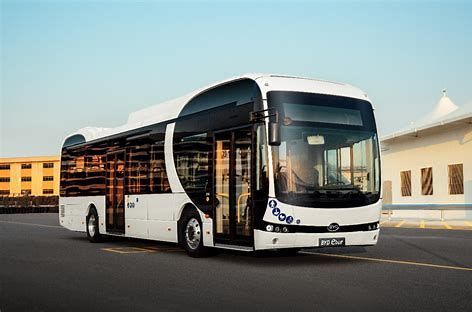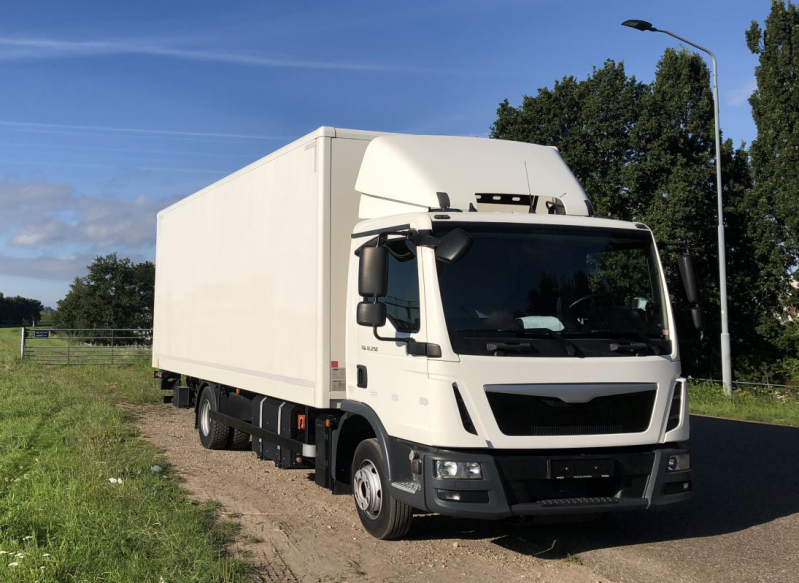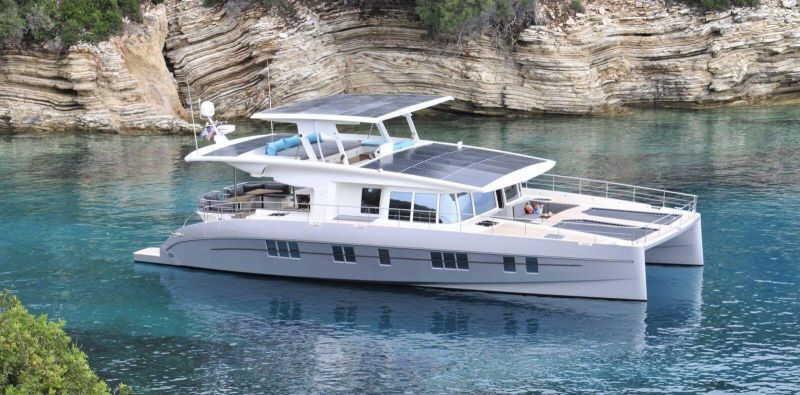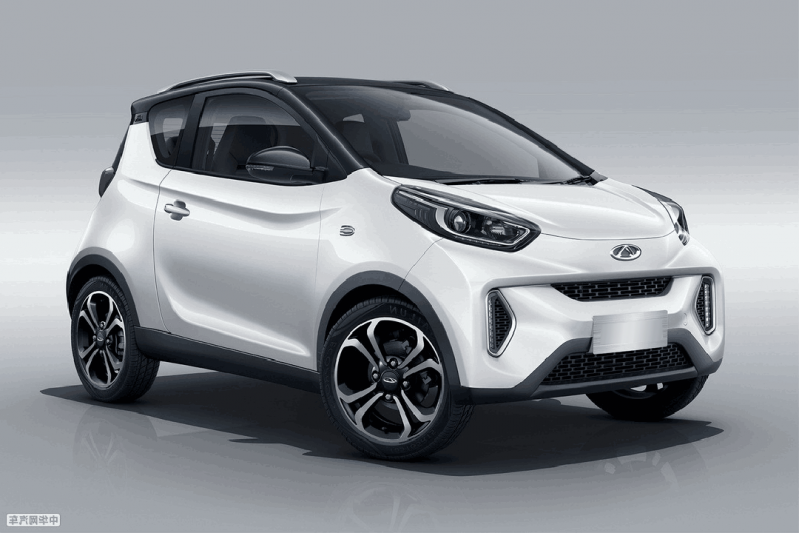-
2025-06-27
Main components and core accessories of electric ships
The three-electric system is the main component of electric shipsBattery system: mainly includes two parts: battery and BMS. Battery is the power source of electric ships, and its performance and cost are dominant. At present, China's ship lithium batteries mainly use iron-lithium batteries, which usually need to have the characteristics of high consistency, high safety, high performance, and long life. The combination of battery system and BMS can achieve stable and efficient operation.Marine electric propulsion system architecture Image source: E FALKEElectric control system: The electric control system includes network control equipment and distribution unit. The network control equipment includes central processing unit, screen display unit, switch and communication module unit, etc. The distribution equipment includes distribution board, starter, shore power box and emergency charging and discharging board, etc.Propulsion system: mainly includes propulsion inverter, propulsion motor and propeller, which is the power unit of electric ships. According to different power networking technologies, electric propulsion can be divided into AC networking and DC networking. At present, DC networking is the mainstream technical route. Compared with AC networking, the system integration is higher. Because the distribution board and some transformers are omitted, the volume and weight are reduced, and the fuel consumption and noise are also reduced.DC grid propulsion system Image source:wartlisaShore power system is the core supporting equipment of electric shipsShore power system refers to the system that supplies power to ships from the port during the normal operation of the ship at the port. It is also called the port shore power system or the shore power system used by ships at the port.The main components of the shore power system include:Shore power supply: including power stations, substations and distribution devices, etc., which can use traditional power networks or renewable energy such as solar energy and wind energy for power supply.Shore cable: The cable system connecting the shore power supply and the ship needs to have high strength, corrosion resistance and insulation performance.Ship interface equipment: including shore power interface equipment and ship receiving equipment. The shore power interface equipment is located on the shore and is responsible for connecting power from the shore cable to the ship.Control and monitoring system: Equipment used to control the operation of the shore power system and monitor power transmission. It can monitor power load, voltage, frequency and other parameters in real time, and adjust and manage them.Shore power system topologyBosa EnergyBosa Energy with 150GWH capacity and over 400,000 electric bus/utility vehicle application experience we are listing first 5 in China power battery industry. We cooperate with Yutong/Geely/Damiler etc.We are also offering Container ESS systems and delivered 6GWh in 2024(=75,000 Model3 with 80kWh battery). In local market, we are offering OEM service for Changan, CALB, National grid, Ping Gao Electric , Xuji electronics, Ruineng electronics, they are our main Container ESS suppliers in China Market.We are the most professional supplier of marine lithium batteries in China, and our export volume of marine batteries consistently ranks among the top three in China; We are also the top 1 exporter of lithium battery modules in China, specializing in providing various lithium battery module solutions.For excellent quality and performance our products are popular in more than 30 countries in the world. We also have established warehouse in Germany and Netherlands to provide safety stock timely delivery for our customers.l Customized and Flexiblel High Delivery capacityl Wide Applicationsl Rich experience on Lithium battery pack
 See more —>
See more —>
-
06-202025
Electric ships are an important direction for industry technology upgrades
Electric propulsion technology has multiple advantages. Electric ships have obvious advantages in reducing operating costs, improving driving experience, and promoting ship intelligence.Low operating costPure electric ships have a greater advantage in operating costs than conventional diesel ships. Taking a tugboat as an example, the power consumption of a pure electric ship within 30 years of its service life can save the cost of a conventional tugboat.Strong maneuverabilityThe propulsion motor speed of a pure electric ship is easy to adjust, and the propeller adopts a full-rotation design, which can provide constant torque at various speeds in both forward and reverse directions.High space utilizationThe shaft length of traditional ships often accounts for about 40% of the length of the ship. Pure electric propulsion ships replace traditional transmission shafts, generator oil separators, oil tanks, fuel boilers and other equipment and facilities as well as fuel pipelines, improve the layout of the engine room, and can make more reasonable use of the engine room space.Environmental protectionPure electric propulsion ships greatly reduce vibration and noise on board, improve the comfort of crew and passengers, and do not emit atmospheric pollutants during work, which also reduces the possibility of fuel pollution to the waters.IntelligencePure electric ships eliminate a large number of fuel machinery and equipment, and replace them with electrical equipment that is easy to operate, more integrated and intelligent, with a high degree of automation, which is more conducive to achieving the integration of machine and driver.Bosa EnergyBosa Energy with 150GWH capacity and over 400,000 electric bus/utility vehicle application experience we are listing first 5 in China power battery industry. We cooperate with Yutong/Geely/Damiler etc.We are also offering Container ESS systems and delivered 6GWh in 2024(=75,000 Model3 with 80kWh battery). In local market, we are offering OEM service for Changan, CALB, National grid, Ping Gao Electric , Xuji electronics, Ruineng electronics, they are our main Container ESS suppliers in China Market.We are the most professional supplier of marine lithium batteries in China, and our export volume of marine batteries consistently ranks among the top three in China; We are also the top 1 exporter of lithium battery modules in China, specializing in providing various lithium battery module solutions.For excellent quality and performance our products are popular in more than 30 countries in the world. We also have established warehouse in Germany and Netherlands to provide safety stock timely delivery for our customers.l Customized and Flexiblel High Delivery capacityl Wide Applicationsl Rich experience on Lithium battery pack
-
06-132025
Introduction to the basics of battery replacement technology for electric boat
(I) Basic principles and types of battery swapping technology1. Basic principlesNew energy ship batte ry swapping technology refers to quickly restoring the ship's endurance by replacing the ship's battery modules, rather than through traditional charging methods. The core of this technology lies in the rapid replacement of battery packs to ensure that the ship can continue to sail in a short period of time.The basic principles of battery swapping technology include:Battery pack standardization: In order to achieve rapid replacement, the battery pack needs to adopt a standardized design to ensure that the battery packs between different ships are interchangeable.Quick connection and disconnection: The connection and disconnection between the battery pack and the ship need to be fast and reliable, and special quick connectors and disconnect devices are usually used.Battery management system: During the battery replacement process, the BMS needs to monitor the status of the battery pack in real time to ensure the safety and performance of the battery pack.2. Types of battery swapping technologyNew energy ship battery swapping technology is mainly divided into the following types:Overall replacement: The entire battery pack is replaced as a whole, which is suitable for ships with smaller battery packs. For example, some small electric outboard motors on the market currently have their own batteries. When the battery needs to be replaced, the whole battery of the main body can be replaced.Modular replacement: The battery pack is composed of multiple modules, and a module can be replaced individually, which is suitable for ships with larger battery packs. Battery modules can be large or small. For example, some large electric transport ships currently make battery modules in the form of 20-foot standard containers. When replacement is needed, just replace some module batteries.(II) Composition and workflow of the battery swap station1. Composition of the battery swap station The new energy ship battery swap station mainly consists of the following parts:Box battery storage area: used to store spare box power supplies to ensure that there are enough battery modules available for replacement.Replacement equipment: including battery replacement platform, lifting equipment, quick connectors, etc., for quick replacement of battery packs.Charging equipment: used to charge the replaced battery pack to ensure that the battery pack can be quickly restored to a usable state.Monitoring system: real-time monitoring of the operating status of the battery swap station, including the status of the battery pack, the status of the replacement equipment, etc.Safety system: including fire prevention, explosion prevention, leakage prevention and other safety measures to ensure the safe operation of the battery swap station.2. Workflow of the battery swap stationShip berthing: The ship enters the dock and docks at the designated berth.Battery pack inspection: staff or automated equipment checks the status of the ship's battery pack and confirms that it needs to be replaced.Battery pack replacement: use lifting equipment to quickly replace the box-type batteries on the ship.Battery pack charging: send the replaced box-type batteries to the battery swap station for charging.Ship leaves the station: After the box battery is replaced, the ship can leave the port and continue sailing.(III) Development trend of battery swap technology1. StandardizationBattery pack standardization: In order to achieve the interchangeability of battery packs, it is necessary to formulate unified battery pack standards, including size, interface, performance, etc.Replacement equipment standardization: Replacement equipment also needs to be standardized to ensure that the equipment between different battery swap stations is interoperable.2. IntelligenceAutomated replacement: Use automated equipment to replace battery packs to improve replacement efficiency and safety.Intelligent monitoring: Use intelligent monitoring systems to monitor the operating status of battery swap stations in real time, and promptly detect and handle abnormal situations.Data analysis: Use big data analysis technology to optimize the operation and management of battery swap stations and improve resource utilization.3. SafetySafety standards: Formulate strict safety standards to ensure the safe operation of battery swap stations.Safety technology: Use advanced safety technologies such as fire prevention, explosion prevention, and leakage prevention to prevent safety accidents.Safety training: Provide safety training for staff to improve safety awareness and emergency response capabilities. 4. NetworkingBattery swap station network: Establish a battery swap station network to achieve information sharing and collaborative work between different battery swap stations.Remote monitoring: Remote management and control of the battery swap station can be achieved through remote monitoring technology.Data sharing: Data sharing between the battery swap station and the ship and shore-based control center can be achieved through the data sharing platform.Bosa EnergyBosa Energy with 150GWH capacity and over 400,000 electric bus/utility vehicle application experience we are listing first 5 in China power battery industry. We cooperate with Yutong/Geely/Damiler etc.We are also offering Container ESS systems and delivered 6GWh in 2024(=75,000 Model3 with 80kWh battery). In local market, we are offering OEM service for Changan, CALB, National grid, Ping Gao Electric , Xuji electronics, Ruineng electronics, they are our main Container ESS suppliers in China Market.We are the most professional supplier of marine lithium batteries in China, and our export volume of marine batteries consistently ranks among the top three in China; We are also the top 1 exporter of lithium battery modules in China, specializing in providing various lithium battery module solutions.For excellent quality and performance our products are popular in more than 30 countries in the world. We also have established warehouse in Germany and Netherlands to provide safety stock timely delivery for our customers.l Customized and Flexiblel High Delivery capacityl Wide Applicationsl Rich experience on Lithium battery pack
-
06-052025
Introduction to the basics of electric boat charging technology
Electric ship charging technology1. Basic principles and types of charging technology(1) Basic principlesThe core of new energy ship charging technology is to convert shore-based power or renewable energy (such as solar energy, wind energy, etc.) into the electrical energy required by the ship's battery pack. The charging process usually involves the conversion and transmission of electrical energy to ensure that the electrical energy is stored in the battery in an appropriate form and rate. The basic principles of charging technology include:Electric energy conversion: converting AC) to DC to match the charging requirements of the battery.Electric energy transmission: transmitting electrical energy from the shore-based power supply to the ship's battery pack through cables, charging plugs and other equipment.Charging control: controlling the charging process through the charging management system (CMS) to ensure that the battery is charged safely and efficiently.(2) Types of charging technologiesNew energy ship charging technologies are mainly divided into the following types:① Wired charging technologyAC charging: Using AC power to charge ship batteries, it is usually necessary to convert AC power into DC power through a charging module.DC charging: Directly using DC power to charge ship batteries, with fast charging speed, suitable for high-power charging.② Wireless charging technologyInductive charging: Through the principle of electromagnetic induction, electrical energy is transmitted from the charging base station to the ship battery pack. Resonant charging: Using the principle of resonance to achieve long-distance wireless charging.③ Renewable energy charging technologySolar charging: Using solar panels to convert solar energy into electrical energy to charge ship batteries.Wind charging: Using wind turbines to convert wind energy into electrical energy to charge ship batteries.2. Composition and working principle of charging equipment(1) Composition of charging equipmentNew energy ship charging equipment mainly consists of the following parts:Charging plug and socket: used to connect shore-based power supply and ship battery pack to ensure the transmission of electric energy. Charging cable: used to transmit electric energy, usually with high conductivity and durability.Charging module: including charging controller, power converter, etc., responsible for converting shore-based power supply into a form of electric energy suitable for ship batteries.Charging management system (CMS): monitors and controls the charging process to ensure that the battery is charged safely and efficiently.Safety protection device: including overcurrent protection, overvoltage protection, overtemperature protection, etc., to ensure the safety of the charging process.(2) Working principle of charging equipmentEnergy conversion: The charging module converts the shore-based power supply (usually AC) into DC to match the charging requirements of the ship battery.Energy transmission: The converted electric energy is transmitted to the ship battery pack through the charging cable.Charging control: The charging management system (CMS) monitors the status of the battery (such as voltage, current, temperature, etc.) and controls the charging process according to the preset charging strategy.Safety protection: The safety protection device monitors abnormal conditions during charging in real time, such as over-current, over-voltage, over-temperature, etc., and takes corresponding protection measures.(3) Development trend of charging technology① Improve charging efficiencyHigh-efficiency charging equipment: Develop high-efficiency charging equipment to reduce energy loss during power conversion and transmission.Intelligent charging management: Adopt intelligent charging management system to optimize the charging process according to battery status and environmental conditions and improve charging efficiency.② Shorten charging timeHigh-power charging technology: Develop high-power charging equipment to increase charging rate and shorten charging time.Fast charging standard: Develop unified fast charging standard to ensure compatibility between different equipment and systems.③ Reduce charging costCost optimization: Reduce the manufacturing cost of charging equipment through technological innovation and large-scale production.Operation cost: Optimize the layout of charging network and reduce the operation and maintenance cost of charging facilities.④ Improve charging safetySafety standards: Develop strict charging safety standards to ensure the safety of the charging process.Safety technology: Develop advanced safety protection technologies, such as over-current protection, over-voltage protection, over-temperature protection, etc., to prevent safety accidents during charging.⑤ Promote the standardization and regularization of charging technologyInternational standards: Promote the formulation and implementation of international charging standards and promote the interoperability of charging facilities between different countries and regions.Industry norms: Formulate industry norms to guide the design, manufacture and operation of charging equipment and ensure the healthy development of charging technology.Bosa EnergyBosa Energy with 150GWH capacity and over 400,000 electric bus/utility vehicle application experience we are listing first 5 in China power battery industry. We cooperate with Yutong/Geely/Damiler etc.We are also offering Container ESS systems and delivered 6GWh in 2024(=75,000 Model3 with 80kWh battery). In local market, we are offering OEM service for Changan, CALB, National grid, Ping Gao Electric , Xuji electronics, Ruineng electronics, they are our main Container ESS suppliers in China Market.We are the most professional supplier of marine lithium batteries in China, and our export volume of marine batteries consistently ranks among the top three in China; We are also the top 1 exporter of lithium battery modules in China, specializing in providing various lithium battery module solutions.For excellent quality and performance our products are popular in more than 30 countries in the world. We also have established warehouse in Germany and Netherlands to provide safety stock timely delivery for our customers.l Customized and Flexiblel High Delivery capacityl Wide Applicationsl Rich experience on Lithium battery pack





